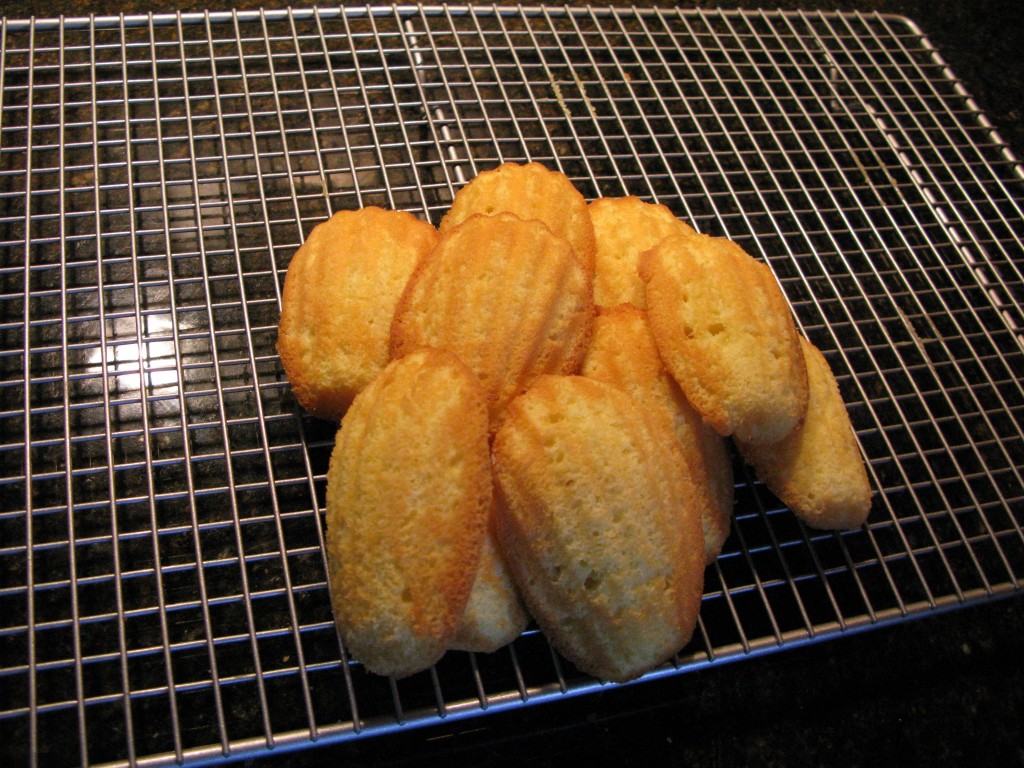If you have never had the joy of dipping a Madeline in a hot cup of coffee or tea under the radiant rays of a Mediterranean sun in the south of France, amidst the potpourri of warm vanilla and citrus coziness mixed with the salty sea tang in the air from the sea…Well–I highly recommend it. 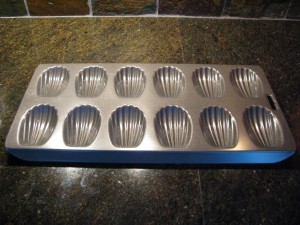
The origin of the Madeline is up for debate–I have included information from Larousse and Wikipedia as well as the famous quote from Proust at the end of this little spiel.
The traditional Madeline recipes are made with ground almonds, according to Larousse (p499), Madelines probably started out as Genoise cake or Genovese cake (pronounced [ʒenwaːz] ), an Italian sponge cake named after the city of Genoa and closely associated with Italian and French cuisine that does not use any chemical leavening, instead using air suspended in the batter during mixing to give volume to the cake. The flavor is similar to but somewhat lighter than sponge cake. Traditional recipes include very finely ground almonds, and a variation uses lemon zest for a pronounced lemony taste.
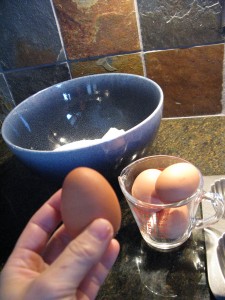 Larousse himself discounts the “attribution of the cake to Madeline Paumier, Cordon-bleu cook to a rich burger of Commercy,” and finds it more likely that the chef is anonymous, and the cakes “originated in Commercy–a town in Lorraine, which was then a duchy under the rule of Stanislaw Leszczynski. It is said that during a visit to the castle in 1755, the duke was very taken with a cake made by a peasant girl named Madeline.”
Larousse himself discounts the “attribution of the cake to Madeline Paumier, Cordon-bleu cook to a rich burger of Commercy,” and finds it more likely that the chef is anonymous, and the cakes “originated in Commercy–a town in Lorraine, which was then a duchy under the rule of Stanislaw Leszczynski. It is said that during a visit to the castle in 1755, the duke was very taken with a cake made by a peasant girl named Madeline.”
According to Larousse, Madelines became in-fashion at the court of Louis XV as his wife, Marie, was the daughter of Stanislaw Leszczynski.
Due to the age of the recipe, it seems doubtful that a concensus will ever be found as to the origins of Madelines–some still even attribute the cake to Avice–Tallyrand’s chef–a much later event in history.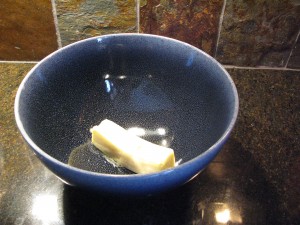
I will include both recipes from Larousse’s Gastronomique–It turns out that my family preferred the Pain de Genes in flavor, but were happy to snack on Madelines made with a teaspoon of rum–an addition that made them poofier and more cake-like.
Also note that since I like Madelines in the morning with my coffee, I tend to make the mix the day before and then refrigerate it overnight in a tupperware–though they are sometimes a little more dense, I get the hot cake without having to use my sleepy morning brain to do much.
Classic Madelines: (adjusted from Larousse’s Gastronomique pg 642)
Melt 100grams/ 4oz/ 1/2 c butter to softness and set aside
Butter Madeline trays and heat oven to 180 C or 350 Degrees Farenheight, ready a wire cooling rack on the side ***
Juice 1/2 lemon, mix with a pinch of salt, 125grams/ 4 1/2oz/ scant 2/3 c caster/superfine sugar, add 3 large eggs and one extra yolk and mix with a wooden spatula.
Sprinkle in 125grams/ 4 1/2 oz / scant 1 1/4 c sifted flour and then add the butter that you set aside earlier.
To add air, I did put one batch with an electric mixer on medium high and though it balled up, it seemed to put some air into the mix.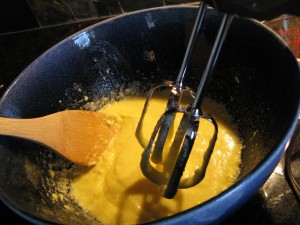
***If you add the butter first, the mix will seem to curdle–just keep mixing till it smoothes out somewhat
Spoon out enough batter to fill each shell halfway (I used a mini melon baller and the medium sized Madeline aspic molds)
Bake 10 minutes in Convection oven or until the tops are golden with brown around the edges
Dump out onto wire rack to cool
Sprinkle with powder sugar and eat!
Pain de Genes (from Larousse’s Gastronomique p 499)
Heat oven to 180 C or 350 F
Butter pan or Madeline molds (if using a cake pan, put wax paper or parchment paper in bottom of pan) and ready a wire cooling rack
Bring 125 grams/ 4 1/2 oz/ generous 1/2 c butter to room temperature–work it into a paste in a Kitchenaid mixer with the paddle or with a firm wooden implement and add 150 grams/ 5oz/ 2/3 c caster/superfine sugar. Beat mix until it turns white, then blend in 100grams/ 4oz/ 1 c ground almond flour. Gradually add 3 eggs one by one, a pinch of salt, 40 grams/ 1 1/2oz/ 1/3 c cornstarch, 1 tbs liquor like Curacao or Pure Vanilla Extract.
Bake around 7 minutes in a convection oven or until the edges look crispy and a little brown, then turn out immediately onto the wire cooling rack.
I hope that this post hasn’t been too overly wordy–perhaps I have gone a little overboard on the topic of such a simple pleasurable cake–yet I am hoping that you will try out one of the recipes, brew a nice cup of tea or coffee, put a few on a plate and sit somewhere sunny while you take a moment to relax and enjoy!
I find it is the simple flavors in life that elicit the most reaction from an eater. Nostalgia ensues from the farthest reaches of our palate when stimulated by familiar and comforting scents and flavors. Marcel Proust is famous for his praise of Madelines in his book In Search of Lost Time:

